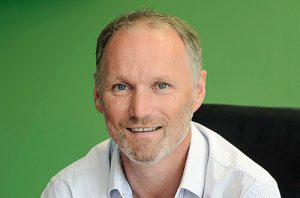
“If you’re not keeping good sets of books (financials), you’re not processing your debits and credits every month, and you don’t have a proper reporting structure, you are going to struggle to get funding from anybody – the banks or anyone else for that matter,” says Retail Capital CEO, Karl Westvig.
He knows this all too well.
His company which provides working capital to small businesses, has advanced over R1 billion to thousands of businesses in the restaurant, retail, wellness and medical industries since 2011. Every business they fund is evaluated and undergoes the process of due diligence to ensure that their risk profile is acceptable.
They have raised nearly R200 million in funding to date themselves, and the same meticulous and exacting standards have stood them in good stead when fundraising.
From bootstrapping as a self-funded startup, they refined their funding strategy, convincing investors such as Futuregrowth, Gen-X Credit Opportunities Fund and Ashburton to fund them.
Westvig says their success is due to developing and maintaining a reliable track record investors have confidence in.
A Look Behind The Curtain
Financial institutions, like Retail Capital raise capital from investors and funders in order to extend credit to their own lenders. To do this they they need to have access to a large pool of capital, which is why the company went through the process of getting themselves rated by ratings agency Global Credit Ratings (GCR) agency, which evaluates lenders based on their operational and financial strengths.
“Being a rated financial institution allows us to access new pools of capital at more cost-effective rates, which will benefit the SME businesses we finance, and also allows us to expand the offering across South Africa,” Westvig says.
To find out how Retail Capital went about raising capital, here are 4 strategies they implemented.
1. Our First Funding Call Was to Friends and Family
Raising funding during the business’ early days was not easy, says Westvig. They approached friends and family for funding and bootstrapping this into larger funding lines.
“When we started the business, we had to seed the business ourselves. We then found angel investors who understood the lending business and who wanted to participate in the space, and they gave us more of the capital to get the business going,” Westvig says.
“We learnt that when you start raising large volumes of funding, the asset managers and investors want to see a successful track record, sound cash flow and good bank conduct. Being self-funded gave us the leeway to build that,” he adds.
2. We Developed An Impeccable Track Record
The company needed to raise more capital as it grew to help it scale further, to do this they looked for more established funders, he says.
“We had an early institutional investor who provided funding and we managed to buy them out after three years. From then we raised most of the funding from institutions such as asset managers. They want to see how the business is performing, they want to know that your books are in order and all the financials you are preparing tell the whole story.”
“They want to know that there’s good governance. There needs to be a board of directors who meet on a regular basis, are producing minutes, and that sound business decisions are made,” he says and adds that “they also want to make sure that there is a level of equity in the business”.
3. We Created A Strong Management Team
Perhaps the most important aspect of building a bankable business, Westvig says, is building a bankable team.
“It all gets back to having a strong management team. If you’ve got high calibre people who can manage the structure, your chances for success are better. So, for example, we have a very strong CFO who makes sure that all the governance is in place. He makes sure that we give regular feedback to our funders, we have the necessary risk management processes in place and that it is documented. Anybody can then walk in and do a due diligence and audit the business. The team ensures that the procedures we agree to are the ones we follow,” he says and adds, “ultimately, it all comes down to governance and risk.”
4. We Considered the Whole Financing Journey
Westvig says from the early days they had an end-game in mind. This shared vision shapes the company’s strategy when fundraising.
“When approaching the topic of funding, you need to think of it as a journey that you graduate from level to level. When you first start a business the easiest is to get funding from friends and family. They are the ones who understand your character and how you are likely to run the business.”
Westvig also says that “for most companies, once you have a track record you graduate from relying on your own cash to looking at high net-worth individuals and funders”.
“From there you graduate into alternate investments, the mezzanine debt funds, and then you move to boutique asset managers and ultimately to large asset managers (i.e. the Sanlams and Old Mutuals),” he adds.










